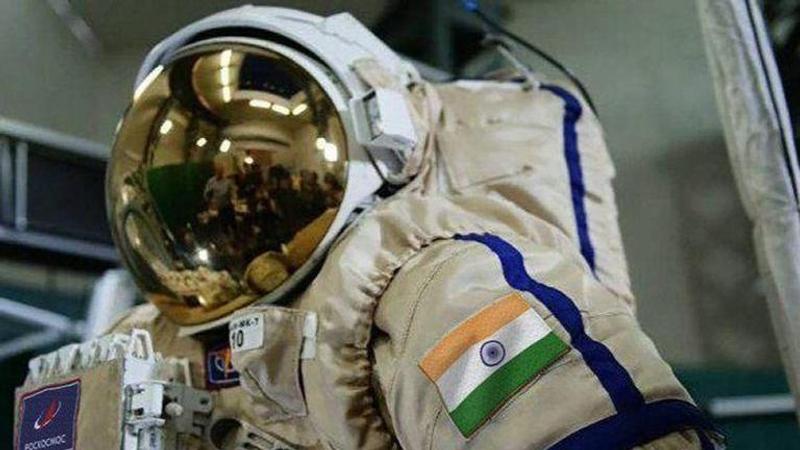Published 15:39 IST, February 2nd 2023
With Department of Space’s budget cut by 8%, what does it mean for India's space program?
The year 2023 alone will see ISRO launch its mission to the Moon, the Sun and a test flight before sending Indian astronauts into space.

The Indian Space Research Organisation (ISRO) will have to continue to work on a shoestring budget as the funding to the Department of Space (DoS) has been slashed by 8%. This comes when the agency has missions lined up which are bigger than ever and are finally expanding beyond the low-Earth orbit (LEO). The year 2023 alone will see ISRO launch its mission to the Moon, the Sun and a test flight before sending Indian astronauts into space. While everyone was hoping for a major boost in financial support from the Centre, the announcement for budget cuts comes as a downer.
If seen from a wider perspective, the Ministry of Science and Technology has received an allocation of Rs 16,361.42 crore for the year 2023-24, which is 15% higher than the previous budget estimate. The Department of Space, meanwhile has a budget estimate of Rs 12,544 crore or around $1.5 billion as opposed to the estimate for the year 2022-23 (Rs 13,700 crore). It is worth noting however, that the revised estimate of DoS for 2022-23 dropped to Rs 10,530 crore, making the current estimates higher than previous year's.
What does this mean for Indian space program?
A reduction in funding means several major missions awaiting their launches will have to wait longer and it would also prevent ISRO from procuring and developing latest technologies. ISRO currently has the Aditya-L1 mission in the pipeline which is targeted for launch in June or July this year. Aditya-L1 is India's first mission to study the sun through a spacecraft that will be installed at the first Lagrange point (L1) in space. There are little doubts about the budget hindering the mission success, other ambitious projects, but the biggest one --Gaganyaan-- might feel the impact. Moreover, there are other satellite launch missions which have failed as the launch vehicles, the latest being the SSLV, failed to perform in its maiden mission last year.
(The SSLV lifting off from Sriharikota on August 7, 2022; Image: ISRO)
Gaganyaan, the $1.4 billion maiden-spaceflight mission, came into existence after ISRO and Russian space agency signed an MoU in 2018. The Gaganyaan program will see a pair of astronauts visit the low-Earth orbit (400 km above Earth) and return for a landing after spending a few days in space. Chandrayaan-3 is another major mission ISRO is planning to launch this year. The mission will be a follow-up of Chandrayaan-2 to the Moon which launched on July 22, 2019, but failed to land on the lunar surface. What's more, is that the agency is eyeing on missions to explore Venus (Shukrayaan) and might launch another mission to Mars.
The mission Shukrayaan was being targeted for launch in December 2024 but it is yet to be approved by the government. ISRO Chairman S Somanath, during an event in October 2022, said that overall plans for the Venus mission, which was first conceived in 2012, and the expense has been identified. However, one important thing required other than the Centre's approval is enough funding to develop the mission with the least margin of error.
This also means that India will have to wait longer to capture a larger share of the global space economy. It current makes for 2.6% of the global space economy which was pegged at $469 billion in 2021, according to a McKinsey report. Notably, a recent report by Ernst and Young and the Indian Space Association (ISpA) said that India's space economy ($9.6 billion in 2020) will increase to $13 billion by 2025. Thankfully, ISRO's spending is not limited to the national budget anymore as it is now earning through launch missions for private companies including those from overseas. The UK-based OneWeb is ISRO's latest customer and it has signed a contract with the agency for satellite launches at a cost of Rs 2,000 crore per launch.
Moreover, the Indian space program is also witnessing giant leaps being made by private space agencies. While Skyroot Aerospace become the first company to launch a private rocket, Dhruva Space launched its nanosatellites aboard ISRO's PSLV-C54 rocket on November 26, 2022. Proper funding would ensure more such space-tech firms are introduced and compete with the US in terms of private companies managing the space sector.
Although it will be unfair to compare ISRO with big players such as NASA ($25.5 billion budget) and the European Space Agency ($17.5 billion), a firm financial assistance is key to ensuring India stays in the race.
Updated 15:49 IST, February 2nd 2023




